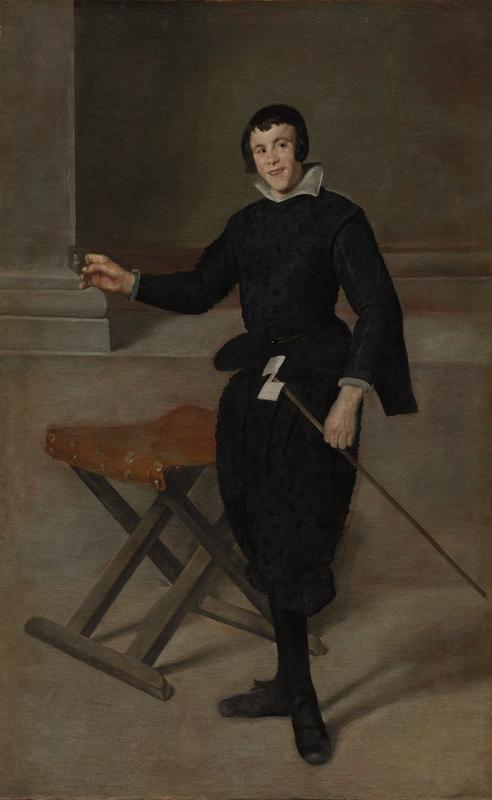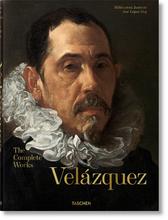More about Portrait of the Jester Calabazas
- All
- Info
- Shop

Contributor
Velázquez's evocative Portrait of the Jester Calabazas, earlier known as Le Fou, shows the possible influence of Caravaggio and became one of many portraits that inspired the later work of Francisco de Goya.
Archival evidence suggests that the father of the artist descended from conversos, Jews who converted to Christianity in order to survive the persecution and eventual expulsion of the Jews from Spain. The outward conversion of Jews living under the political dominion of Christian and Islamic regimes did not always indicate an inner spiritual acceptance of the doctrine of the dominant faith. On the contrary, in the 12th century, before the expulsion of the Jews from Spain, a Spanish Jew who left Spain for Egypt and became one of the greatest medieval philosophers, Rabbi Moshe ben Maimon (רבי משה בן מימון), defended the choice of Jews living under Islam to convert, rather than become martyrs, arguing that such people were still Jews and deserved equal respect within the community. With such a background, Velazquez and his family occupied a liminal space, living in the former Jewish quarter of Seville, and this liminality of his identity gave him a heightened consciousness of others who lived on the margins, as he depicted in his portraits.
In those days of feudal Spain, few people understood the difference between physical and psychological disabilities, and people with disabilities had very few rights aside from the advocacy of family and, in the case of the portrait's subject, nobility. The Americans with Disabilities Act, which afford federal protections for disabled people in the United States, has made an impact which we cannot overstate: it has altered the protection of the rights, dignity, and autonomy of disabled people around the world. A significant portion of the literature on the Portrait of the Jester Calabazas, also named Calabacillas, is speculation regarding the medical nature of the condition of Don Juan de Calabazas. Psychologist Jerónimo de Moragas argues that Calabazas did not have an intellectual condition but cerebral palsy, which affects the coordination of the brain and the body, and perhaps a condition of the facial features. Calabazas was "not stupid," Moragas adds. The fact that a journal of medicine would print such words three centuries after the portrait was made is evidence of the ignorance of the society itself.
The realism and starkness of the portrait, the matter-of-factness and the artist's lack of commentary on the subject, suggests that Velázquez recognized that the feudal system would not survive much longer, that its decadence would catch up with it. The fact that Michel Foucault and many other 20th century writers would dedicate their energy to analyzing the work of Velázquez indicates that although the artist was forced to practice with only two possible patrons, the Catholic church and the Crown, he was able to express a great brilliance within his restricted environment.
Sources
- Bass, Laura R. The Drama of the Portrait: Theater and Visual Culture in Early Modern Spain. University Park, PA: Penn State Press, 2008.
- Carr, Dawson W., and Leah Karibian. Velázquez. London: National Gallery, 2006.
- Heschel, Rabbi Avraham Yehoshua. Maimonides: A Biography. New York: Farrar, Straus and Giroux, 1983.
- López, Victoriano Roncero, and Esther Cadahía. "The Court Jester in 16th and 17th Century Spain: History, Painting, and Literature." South Atlantic Review 72, no. 1 (Winter 2007): 93-110.
- Moragas, Jerónimo de, "Los Bufones de Velázquez." Medicina & Historia, Fasciculo VI (Nov-Dec. 1964): 5-15.
- Pérez, Javier Portús. Velázquez's Fables: Mythology and Sacred History in the Golden Age. New York: Antique Collectors' Club, 2007.
- Salazar, J. Allende, and F.J. Sánchez Cantón. Retratos del Museo del Prado. Madrid: Cosano, 1919.
- Samuel, Edgar. "The Jewish ancestry of Velasquez." Jewish Historical Studies 35 (June, 1996): 27–32.
Featured Content
Here is what Wikipedia says about The Jester Calabacillas (Cleveland)
The Jester Calabacillas (Spanish - El bufón Calabacillas) is a 1626-1632 oil on canvas painting by Diego Velázquez, now in the Cleveland Museum of Art. Its attribution is based on stylistic similarities to other works by the artist - for example, José López-Rey sees similarities in the treatment of the face in this work and that of Bacchus in The Triumph of Bacchus. Its subject is thought to be the jester Juan Calebasse, also painted by the artist in a work now in Madrid and a now-lost work entitled "calebasses in a turban", the latter recorded in 1642 and 1655 inventories of Diego Felipez de Guzmán's collection.
It probably originated in the Buen Retiro Palace before being seized after the French occupation of Spain in 1808. The work was exhibited at a retrospective on the artist in Paris in 1866, at which time it was owned by the Duke of Persigny. After passing through other hands, it was sold at auction at Christie's in London in 1965 for 170,000 guineas, passing to its present owner later the same year.
Check out the full Wikipedia article about The Jester Calabacillas (Cleveland)













